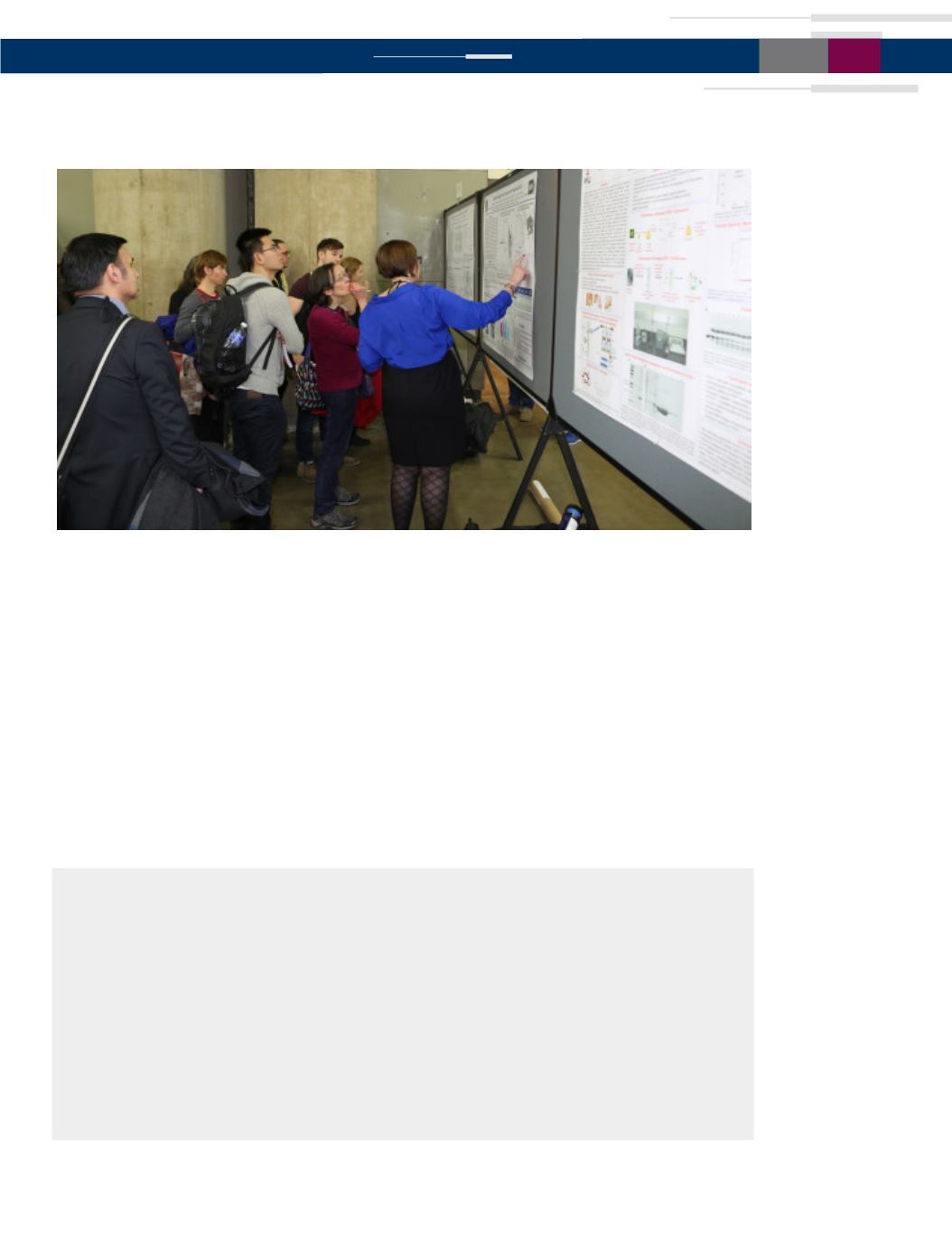

BIOPHYSICAL SOCIETY NEWSLETTER
11
SEPTEMBER
2016
With your poster finished, it’s time to prepare
your actual presentation. You’ll want to stick
around near your poster for as much time as you
can to engage with readers, answer questions, and
of course meet and network with other scientists
interested in your research. Definitely plan to
camp out by your poster for at least the hour that
you are scheduled to present. Keeping in mind
that most people will only stop for a moment, and
even those who linger will only do so for three to
five minutes, put together an “elevator speech”
with the top points you want to make and practice
it! To help develop your presentation, test it out
on a colleague or labmate to get feedback on your
clarity and delivery.
Engage curious parties in conversation, but be
careful to not badger anyone, or to be too en-
grossed in any one conversation (thus ignoring ev-
eryone else). You can always schedule a follow-up
with very interested individuals if needed. If you
have them, bring business cards (or paper and pen)
to share your contact information with anyone
interested in follow-up.
If you come prepared with a well-designed poster,
a few key talking points, and copies of any neces-
sary ancillary materials, you can hang your poster
and then let your science speak for itself!
Popular on the BPS Blog
Imposter Syndrome: The Dilemma between Who We Are and Who We Are Perceived to Be
In this three-part series, BPS members
Marina Ramirez-Alvarado
and
Dwight P. Wynne
explore the
problem of “imposter syndrome,” an issue many high-achieving individuals have, in which they are un-
able to internalize their accomplishments. People with imposter syndrome end up feeling as though they
are not truly talented, but are fooling everyone into thinking so. Ramirez-Alvarado and Wynne look at
ways in which the scientific community can address the underlying issues that foster imposter syndrome.
https://biophysicalsociety.wordpress.com/2016/07/13/impostor-syndrome-the-dilemma-between-who-we-are-and-who-we-are-perceived-to-be/


















